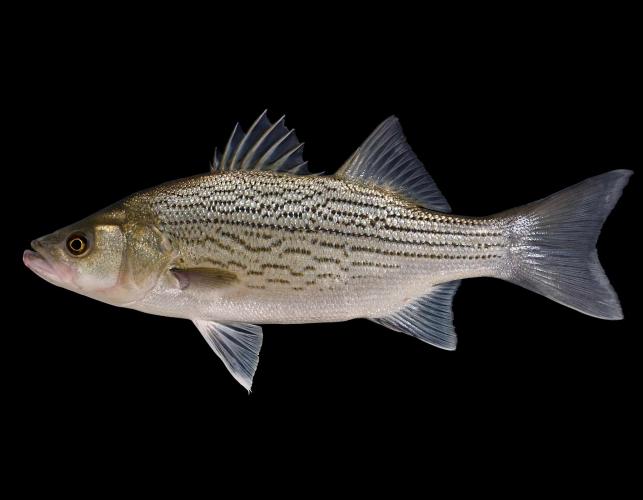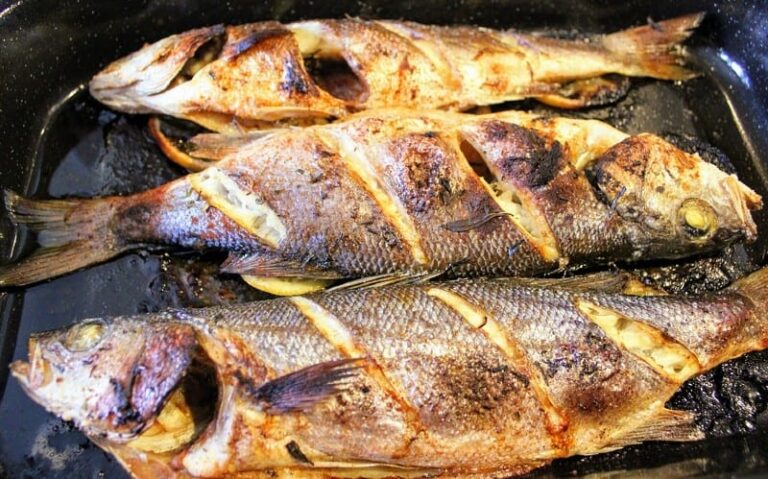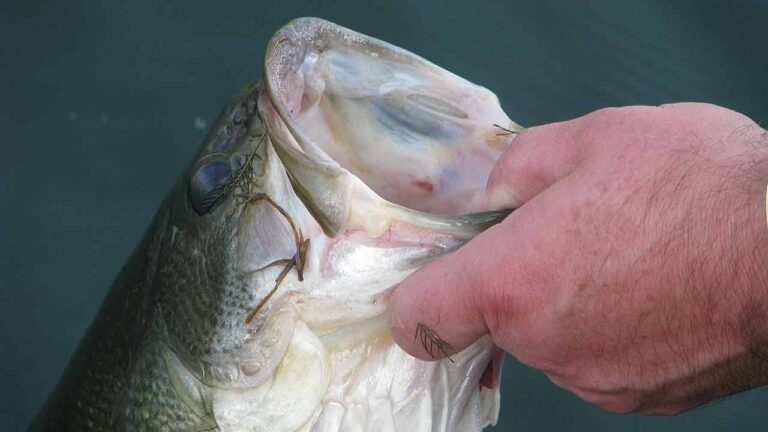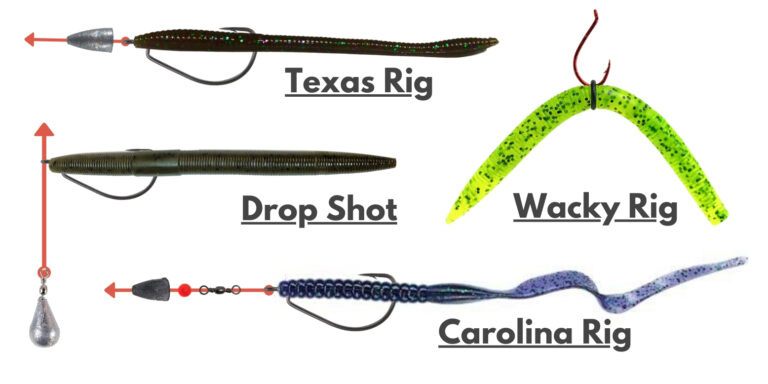What Size Hook for Bass Plastic Worm?
For bass fishing with plastic worms, a 3/0 to 5/0 sized hook is ideal. Select a hook size that pairs well with the size of the worm used.
Bass fishing enthusiasts often turn to plastic worms as a go-to lure, carefully selecting their tackle to increase their catch rate. The right hook size is crucial for ensuring both effective hook sets and a natural presentation of the worm, key components for attracting bass.
As these voracious predators are known for their aggressive strikes, using the correct hook not only helps in securing the fish but also minimizes damage to the bait, allowing for multiple uses. Seasoned anglers know that matching the hook to the worm’s size and the targeted bass species can make all the difference between a day of success or one of missed opportunities.
Choosing The Right Hook For Bass Fishing
The right hook size is crucial for bass fishing with plastic worms. Large hooks may scare the fish, while small hooks can lead to missed catches. Bass often require hooks between 2/0 to 5/0. The type of plastic worm also influences the hook size.
There are multiple hook types suitable for bass. Worm hooks are common, designed to fit the worm’s shape. Offset hooks help with snag-free fishing. Wide gap hooks offer a better hookup ratio, especially for larger worms. Choosing the right hook leads to more successful bass fishing.
Plastic Worms: A Bass Angler’s Best Friend
Plastic worms are a go-to for bass fishing. They mimic real worms in water. Bass love to eat worms.
Anglers use different styles of plastic worms to catch bass. Each style works in unique conditions. Knowing when and how to use each worm is key.
Some popular techniques include the Texas rig and the Carolina rig. Wacky rigging is also effective. These methods help plastic worms look natural in the water.
Anglers pick worm color based on the water color. Dark water means darker worms. Light, clear water calls for lighter colors.
| Technique | Use Case | Plastic Worm Type |
|---|---|---|
| Texas Rig | Weedy areas | Soft plastic |
| Carolina Rig | Deep water | Lizard-shaped plastic |
| Wacky Rig | Open water | Stick bait |
Matching Hook Size To Worm Type
Understanding hook sizes for bass fishing with plastic worms is crucial. Plastic worms vary in size, like ribbon tail, straight, and other styles. Each type pairs with different hook sizes. Anglers should match their hooks appropriately to the worm for successful bass catches.
For example, a 6-inch straight worm works well with a size 2/0 to 3/0 hook. A larger 10-inch ribbon tail requires a 4/0 to 5/0 hook. Using optimal hook sizes ensures that the worm looks natural in the water and improves hook-up ratios. Below is a table for quick reference.
| Worm Style | Optimal Hook Size |
|---|---|
| 6-inch Straight Worm | 2/0 – 3/0 |
| 10-inch Ribbon Tail | 4/0 – 5/0 |

Credit: m.youtube.com
The Anatomy Of A Hook
The right hook size for bass fishing with plastic worms is crucial. Think of a hook as a fish’s big mistake. The hook has many parts, like the eye where your line goes, the sharp point that grabs the fish, and the bend that keeps it secure. Keep in mind, for plastic worms, size 4 to 2/0 works really well.
A smaller hook might not catch big fish. A too-big hook can scare them away. Use a hook that’s just right to hold the worm and catch bass. Anglers often choose 3/0 to 4/0 hooks for the best grip on larger plastic worms.
Expert Tips For Hook And Worm Pairings
Choosing the right hook size for bass fishing can be tricky. Experts advise that a 4/0 hook is often the best general size for plastic worms. Bigger hooks, like 5/0 or 6/0, match larger bass and bigger worms. Smaller hooks may be better in clear water where fish are wary.
Anglers should consider the bass size they target. For larger bass, opt for thicker hooks to handle the strain. Smaller bass can allow for finer wire hooks. It’s essential to have a snug fit between the hook and worm to ensure a natural presentation.
The water clarity and conditions greatly impact hook selection. Stealthier setups are key in clear waters to avoid spooking fish. In murky conditions, a stronger hook that can handle more aggressive bites is essential.
Do’s And Don’ts Of Bass Hook Selection
Selecting the right hook size for bass fishing can be tricky. A common mistake is using a hook that’s too large or small. Avoid mismatching hook and worm sizes. This leads to less bites and lost fish.
It’s important to secure your plastic worm properly. Ensure the hook’s point is not buried too deep in the worm. This could hinder hooksets. Additionally, choose hooks with sharp points. This ensures better penetration during the strike.
- Don’t ignore the worm’s size – match the hook accordingly.
- Sharp points are crucial – they help with successful hooksets.
- Steer clear of heavy wire hooks unless you are fishing in cover.
- Test your hook’s point often – replace if dull.
Frequently Asked Questions
What Size Hook Is Best For Bass Worms?
The optimal hook size for bass worms is typically between 3/0 and 5/0, which balances secure hooksets with minimal lure interference.
What Hook To Use For Plastic Worm?
For fishing with plastic worms, use a worm or offset hook, typically ranging in size from 1/0 to 4/0, for effective hooksets and fewer snags.
How Do You Hook A Plastic Worm To A Largemouth Bass?
To hook a plastic worm for largemouth bass, thread it onto the hook’s shaft, bury the hook point in the worm’s body, and ensure it hangs straight to mimic natural movement.
What Size Hook Should I Use For Worms?
For worm fishing, use a hook size ranging from 4 to 1/0 for small worms, and size 2/0 to 4/0 for larger worms or nightcrawlers to effectively catch a variety of fish.
Conclusion
Selecting the right hook for your bass plastic worm can make or break your fishing trip. Opt for sizes between 1/0 and 4/0 to best match the worm and target bass. Keep local conditions in mind, and don’t hesitate to experiment.
Happy fishing and tight lines!





